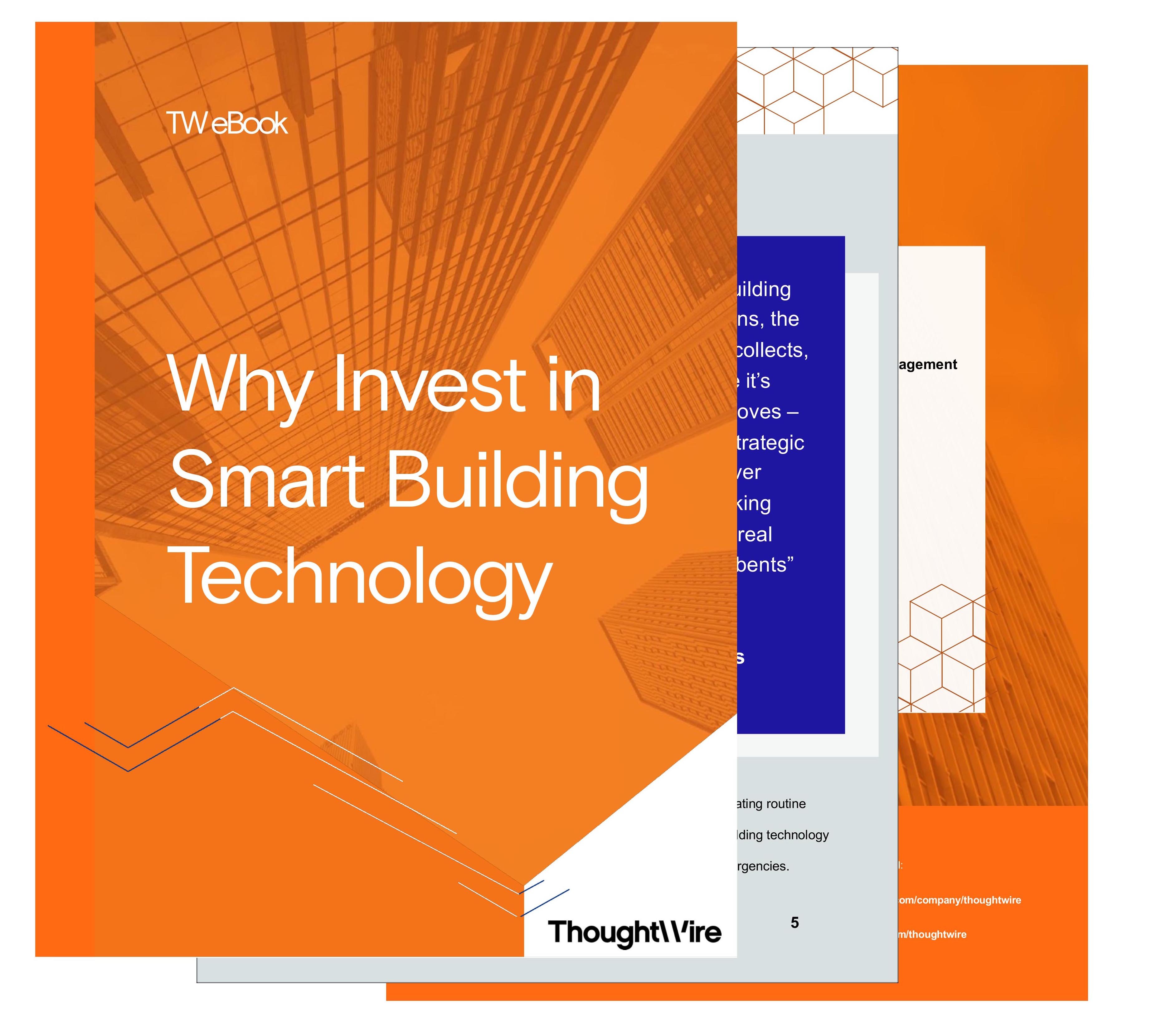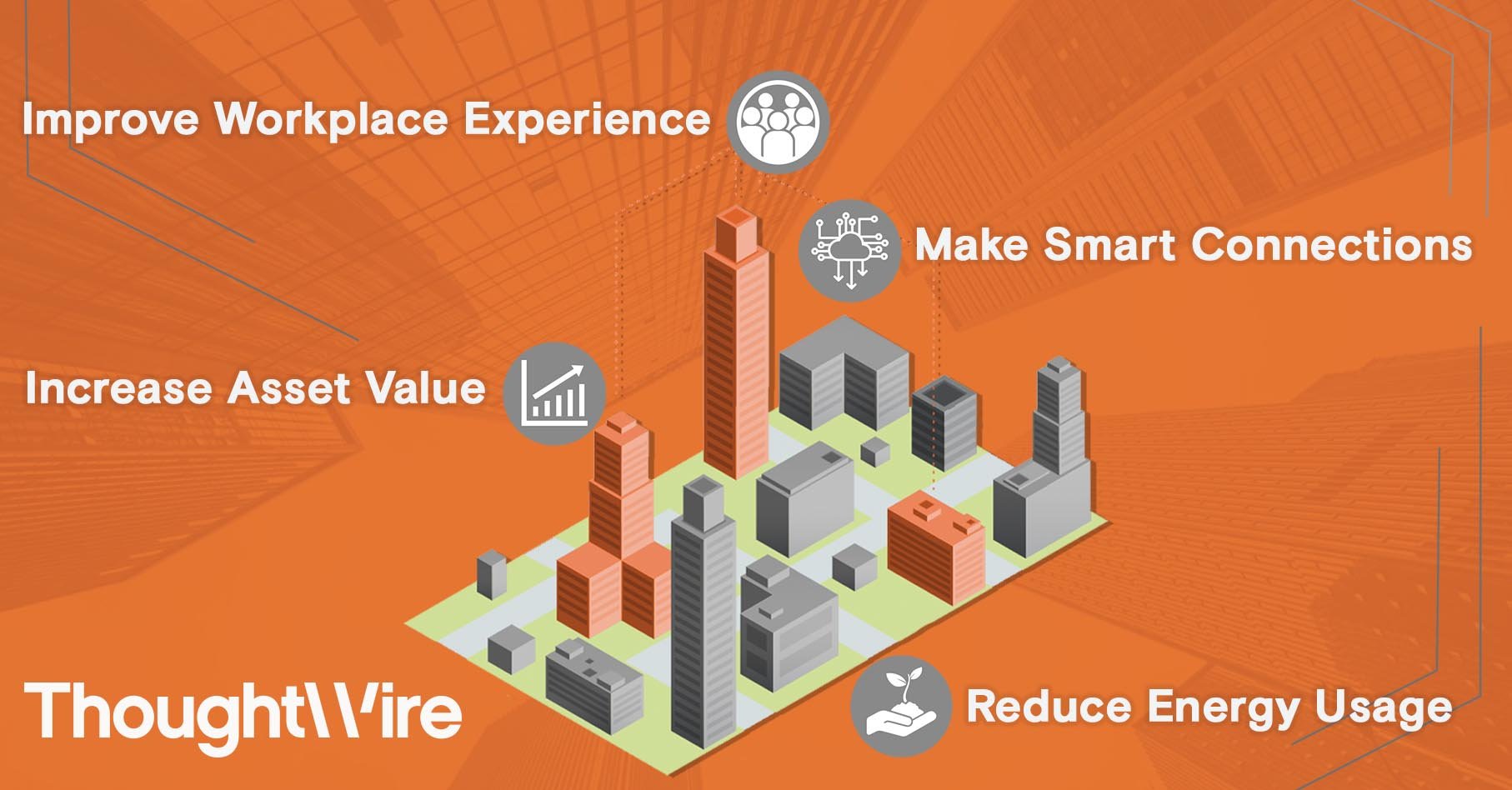There are many reasons to consider retrofitting an older commercial asset into a Smart Building. Often, for many commercial building owners and operators, their first priority is to reduce the energy footprint of older buildings. According to the US Energy Information Administration, roughly 39% of the United States’ energy consumption is from buildings. While larger urban centers can observe a jump to 70%, energy consumption should not be the primary reason for retrofitting a commercial space to be smart. Retrofitting a building into a Smart Building can help in achieving your sustainability goals but also improve the lives of people who live, work, and play inside your space.
The competitive advantage of Smart Buildings is well documented, not only are they better able to meet sustainability goals, but the available data from a fully IoT enabled building can deliver more complex use cases like intelligent space optimization. Smarter buildings are smart for business. Retrofitting into a smart building can optimize the efficiency of operations, give your building managers greater command and control of the space, and deliver a frictionless workplace experience. All leading indicators for premium lease rates with longer terms and happier tenants.
So, if retrofitting is so great then why isn’t every building “smart”? Well, the answer lay with the myriad of challenges organizations face when considering an upgrade to their building. Will implementing “smart” features actually help my bottom line? How long will it be before there is a monetary value? And so on. In our conversations with commercial real estate owners, we’ve found a few common challenges exist when executing on a retrofit project. We’ve outlined a few to illustrate the pitfalls to avoid when considering a retrofit project.
#1 The fear of a costly project and long payback period
Status quo is often the enemy in these situations. The fear of a costly upgrade that may not deliver the intended results in a timely fashion often stall progress on retrofit projects. These concerns are valid but are driven by a lack of strong leadership and alignment on why the retrofit is necessary and how the project will get completed. The focus often shifts to more near-term, low-cost band-aid solutions that won’t disrupt the status quo or the budget. This tendency can often lead to costly replacements down the line or a missed opportunity for transformative performance improvements.
Suggestion: Create a strong framework for why this project is important. Ask questions to get the most robust understanding of what this project means for broader business objectives. Is it driven by corporate social responsibility? A promise to be more “green”? How do the potential costs translate over the lifetime of the asset? Will this retrofit enable us to do more with what we have today?
#2 Lack of awareness for key performance indicators
Many decision makers along the value chain may not have a clear picture of what upgrades will be necessary in order to enable some of the more complex efficiency or workplace experience oriented use cases. Organizations may not have consensus on KPIs, have selected too many that potentially compete, or others that are not within the scope of the planned building upgrades. For example, perhaps there is a KPI for how window shades impact energy usage but you have not planned investment in smart glass or intelligent shades.
Suggestion: Start with a thorough data analysis to understand what KPIs matter in achieving your broader business objectives. If you are the champion of the project get buy-in on these metrics early on and try not to course correct, it may have downstream impacts on the work your retrofit partners may be planning.
#3 Lack of supporting incentive structure between tenants and landlords
Commercial leases can put a wrench in your retrofit initiatives if they are solely focused on energy savings. When a tenant pays directly for their energy consumption there is little incentive for landlords to invest in energy efficiency where the tenant would gain all of the cost benefits. This scenario creates a longer payback period for the landlord.
Suggestion: Get buy-in by broadening your use case for retrofit beyond mere energy efficiency. Think about energy in the context of workplace satisfaction and making occupants happier in their space. Look at the data and see how many temperature complaints you get on a daily basis. A retrofit conversation can then move beyond energy savings to tenant retention - a more attractive reason for the landlord to consider the investment.
Want to learn more? Schedule a demo to see our Smart Building solutions in action.





